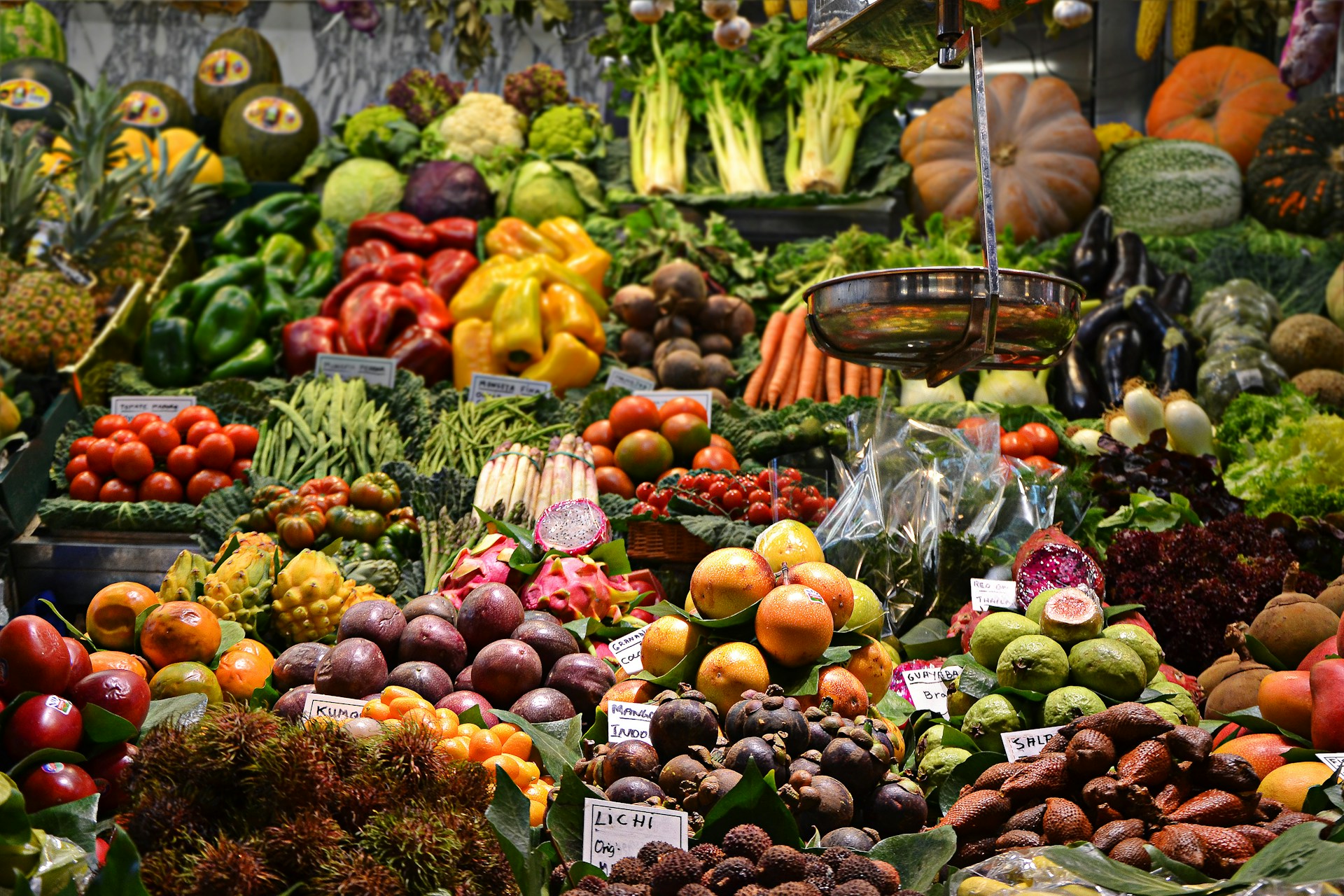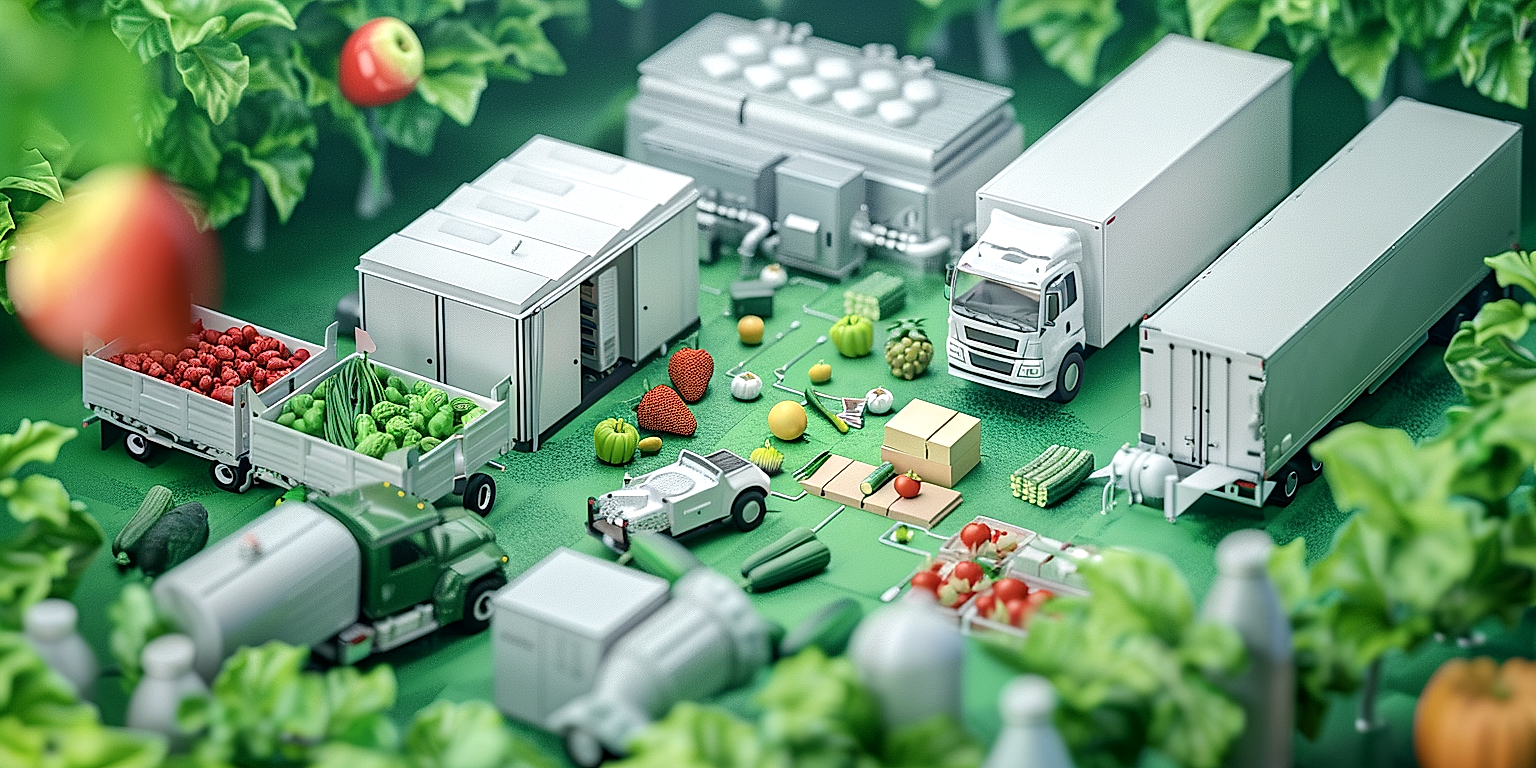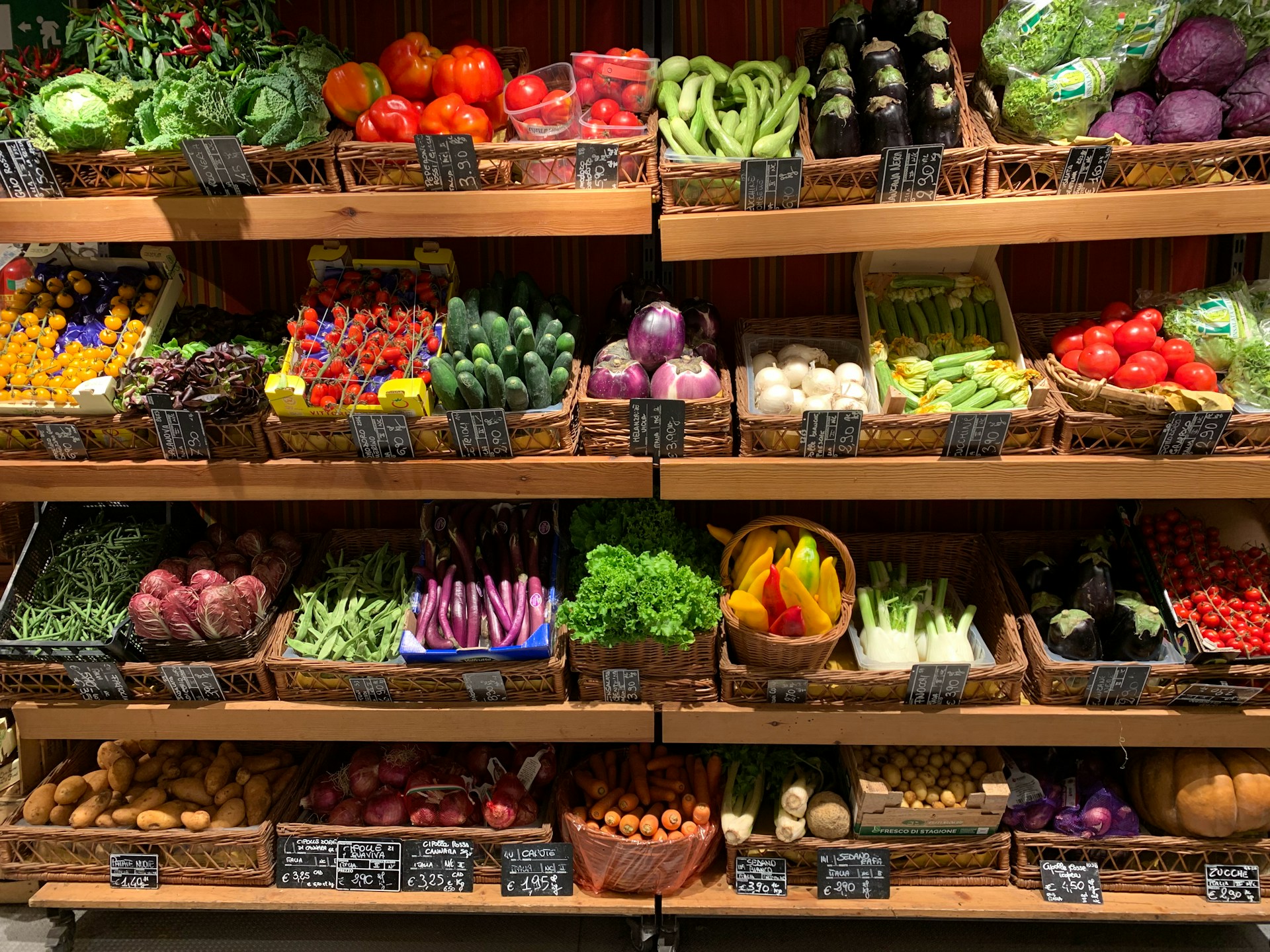Supply chains for perishable goods present unique challenges that demand thoughtful, calculated solutions.
These include time sensitivity, fragility and strict temperature requirements.
As such, optimizing the “cold chain” in produce distribution is critical for maintaining product integrity, reducing waste, and increasing profitability.
Ensuring efficiency in this sector is not just about preserving shelf-life, but also about guaranteeing the quality of food making its way to consumers.
This post will delve into practical and effective strategies to optimize cold chain operations.
Embracing these innovative approaches can prove instrumental in enabling the flow of fresh produce from farm to table.
Contents
- Efficiency Boosters For Cold Chain In Produce Distribution
- 1. Use high-tech refrigeration and freezing systems.
- 2. Improve Insulation for Transportation Vehicles
- 3. Optimize Routing and Scheduling
- 4. Implement Real-Time Temperature Monitoring
- 5. Advance cargo loading and unloading practices.
- 6. Employ Energy-Efficient Cold Storage Facilities
- 7. Use Insulated Packaging for Produce
- 8. Conduct Regular Maintenance Checks.
- 9. Apply effective inventory management systems
- 10. Automate or Digitalize Data Collection and Reporting
- The Bottom Line
Efficiency Boosters For Cold Chain In Produce Distribution
1. Use high-tech refrigeration and freezing systems.
In the realm of produce distribution, the utilization of high-tech refrigeration and freezing systems is crucial to maintain product freshness.
Advanced refrigeration systems not only keep produce at optimal temperatures but also manage the environment to slow down the ripening process, thereby extending shelf life.
The innovation in freezing systems has allowed for rapid freezing, which minimizes the formation of ice crystals that can damage cell structures and lead to loss of quality.
The integration of high-tech features such as precise temperature control, humidity regulation, and automated defrost cycles make these systems a go-to solution for stake holders in the cold chain.
Advancements in technology also contribute to energy efficiency and eco-friendliness, as modern systems often incorporate green technologies that reduce the carbon footprint.
These advanced systems usually have the potential to connect to a network, making remote monitoring and control possible, leading to better management and lesser wastage.
Additionally, the implementation of high-tech refrigeration and freezing systems enables compliance with food safety regulations, as it helps maintain a constant cold chain.
Since each product has its own unique temperature needs, these systems allow for custom temperature settings, offering a more personalized cooling solution.
In the face of growing demand, utilization of these systems enables businesses to scale up operations without a corresponding increase in energy costs.
The use of advanced systems also reduces the risk of product spoilage due to mechanical issues as these systems have advanced warning systems and built-in redundancies to provide backup cooling.
Where freshness is the topmost priority, such as in seafood, meats, and certain types of produce, these advanced freezing systems deliver high-quality cooling and freezing capabilities.
Thus, a minor yet significant advantage of modern cooling systems is their ability to control the spread of odors, enabling the storage of various products together without affecting their individual characteristics.
The use of such systems also suggests a corporation’s commitment to quality, positively affecting its image and reputation in the market.
In terms of return on investment, while these advanced systems may have higher upfront costs, their operational efficiency and reduced wastage assure a favorable payback period.
In essence, the use of high-tech refrigeration and freezing systems is not just an option, but rather a necessity for entities in the cold chain sector who are striving for optimal operations and improved efficiencies.
2. Improve Insulation for Transportation Vehicles
Transportation is one of the main pillars of the cold chain and plays a significant role in maintaining the integrity of the produce.
This is where the concept of insulation comes into play.
Improving the insulation of transportation vehicles, such as refrigerated trucks and containers, can significantly enhance the efficiency of the cold chain.
The insulation prevents the heat from the outside environment from infiltrating into the vehicle’s interior, thereby keeping the internal temperature stable.
It essentially acts as a thermal barrier that helps maintain the desired temperature.
Additionally, effective insulation can lead to considerable energy savings because the refrigeration systems do not have to work as hard to keep the temperature within the required range.
The choice of insulation material also matters a great deal.
Insulation materials such as polyurethane and polystyrene are considered the best due to their high thermal resistance and low thermal conductivity.
Naturally, the thicker and denser the insulation material, the better the insulation effect.
However, it is crucial to take into account the ratio between the increase in insulation thickness and the decrease in payload capacity.
Therefore, improving insulation is about finding a balance between thermal performance and payload capacity.
Another factor to consider is the lifespan of the insulation material.
Over time, insulation may degrade and lose its effectiveness, leading to higher energy consumption and product spoilage.
There’s a need for regular maintenance checks to ensure the insulation remains in top shape, which also forms an integral part of improving the insulation of transportation vehicles.
Investing in insulating technologies such as vacuum insulation panels (VIPs) or aerogel materials could further improve the insulation efficiency.
VIPs, for instance, are up to ten times more effective than traditional insulation materials.
Such advanced solutions could considerably boost the efficiency of the cold chain in produce distribution.
To sum it up, adequate insulation of transportation vehicles is a critical part of ensuring that the produce maintains its quality and safety during transit.
3. Optimize Routing and Scheduling
In the realm of cold chain logistics for produce distribution, one significant way to boost efficiency is to optimize routing and scheduling.
This process involves choosing the most direct and quickest transportation routes to maintain the freshness and quality of the produce.
By limiting the time that produce spends in transit, the chances of degradation or spoilage are significantly reduced.
Optimizing routing and scheduling in cold chain logistics presents a unique opportunity to ensure the integrity and quality of fresh produce while saving time and reducing costs.
Furthermore, scheduling should be meticulous
to avoid overlaps or delays that can jeopardize the shelf-life of the produce.
Efficient routing also reduces fuel consumption and emits less carbon footprint , aligning with sustainability goals.
Today, optimization of routes can be done through advanced software that uses algorithms to devise the most efficient routes based on various factors like distance, traffic, and vehicle capacity.
Moreover, considering the perishable nature of fresh produce, it’s essential to factor in expected weather conditions and possible delays when formulating routing schedules.
The use of these technologically advanced systems ensures just-in-time deliveries, thereby minimizing the time produce spends in storage.
By accomplishing this, businesses can reduce energy costs, improve customer satisfaction and boost overall operational efficiency.
While striking a balance between efficiency and cost can be challenging, successfully optimizing routing and scheduling can yield substantial benefits.
Given the rapid technological advancements, such systems will only become more refined and accurate in future.
This seemingly simple strategy of optimizing routing and scheduling can drastically enhance the efficiency of cold chain logistics in produce distribution.
Therefore, businesses aiming to stay competitive and meet the rising demand for fresh, high-quality produce should prioritize incorporating this approach.
4. Implement Real-Time Temperature Monitoring
For perishable goods, especially produce, constant and consistent temperature is crucial to maintaining their freshness and overall quality.
Real-time temperature monitoring technology plays a very vital role in ensuring the efficiency of the cold chain.
With sensors and tracking systems, real-time temperature monitoring enables instant detection of any temperature fluctuations or anomalies.
This advanced technology can drastically reduce instances of unpredictable spoilage as distributors can now have an immediate response to any irregularities.
By implementing real-time temperature monitoring, the potential for wastage of produce is greatly decreased, as the integrity of goods can be instantly assessed wherever they are.
However, the advantages of real-time temperature monitoring are not only limited to quality control of produce.
This technology also optimizes the performance of cold storage systems by ensuring that they function efficiently, precisely, and consistently.
Moreover, real-time temperature monitoring can provide critical traceability data essential for food safety regulations and audits.
By having instant and continuous visibility of the temperature data, you can improve inventory management and effectively plan and schedule your operations.
Furthermore, there is an undeniable cost-saving benefit associated with this technology since it could prevent devastating losses due to temperature inconsistencies.
As a matter of fact, a well executed real-time temperature monitoring will save more assets by preventing spoilage than it incurs as an upfront investment, making it a beneficial business strategy.
In essence, real-time temperature monitoring signifies the transformative convergence of technology and traditional cold chain operations.
From preservation to distribution, real-time temperature monitoring plays a pivotal role in ensuring that the quality and safety of the produce are well maintained.
Therefore, implementing real-time temperature monitoring can be seen as a critical boost of efficiency for the cold chain in produce distribution.
It’s a straightforward, yet significant paradigm shift, with incredible implications for the whole of the distribution industry.
5. Advance cargo loading and unloading practices.
The efficiency of the entire cold chain process relies significantly on the appropriate handling of produce during loading and unloading.
Improvements in this area can lead to fewer delays, reduced product damage, and optimized use of refrigerated transport space.
The advance of cargo loading and unloading practices primarily refers to the adoption of modern technologies and procedures that improve the speed and accuracy of these operations.
The implementation of specialized equipment like hydraulic lifts, conveyor belts, and automated pallet systems can significantly increase the efficiency and safety of loading and unloading processes.
Besides, the utilization of technology-enabled docks that correspond and interact with refrigerated transportation can also improve the speed and effectiveness of these operations, as well as offer additional energy savings.
One prevalent technology in this field is the telematics system, which integrates GPS tracking, onboard monitoring, and real-time communication to manage loading and unloading tasks proactively.
This system can monitor the speed and accuracy of these tasks, ensuring that produce is not exposed to unsafe temperatures during transfer.
Moreover, training staff on the best practices for handling produce can significantly minimize product damage or waste and increase overall productivity.
This could encompass activities such as how to properly palletize and wrap products, understanding the best order and method for loading vehicles, or learning how to swiftly and safely operate loading equipment.
Furthermore, using appropriate packaging material that can withstand the rigours of loading and unloading would also reduce product damage and thereby help maintain the cold chain integrity.
Also, it’s worth considering that advance cargo loading and unloading practices will also involve the optimization of warehouse layout.
A well-planned layout will facilitate easy movement of goods and avoid any unnecessary holdup, thereby reducing the risk of produce spoilage.
In addition, predictive analytics can be used to anticipate the peak periods of activity, streamline workforce allocation, thereby further enhancing the efficiency of cargo loading and unloading.
In the long run, companies can achieve operational efficiency, reduce carbon footprint, and improve their bottom line by advancing their cargo load and unload practices.
Thus, implementing advancements in cargo handling practices is not only a necessity but also a strategic step in enhancing the efficiency of the cold chain in produce distribution.
6. Employ Energy-Efficient Cold Storage Facilities
In the logistics chain of perishable goods like produce, energy-efficient cold storage facilities play a significant role.
These facilities are designed to maintain the quality and shelf life of produce while minimizing the energy consumed, thus aiding in resource optimization and cost reduction.
To build an energy-efficient cold storage facility, specific design and operational considerations must be taken into account.
One of these considerations is the type of cooling system installed. A cooling system that harnesses natural coolants or runs on renewable energy not only conserves energy but also reduces the carbon footprint of the facility.
The use of advanced automation and controls in these facilities can monitor and regulate temperature and humidity levels, ensuring optimal conditions for storing different types of produce.
Furthermore, an energy-efficient layout design minimizes the need for excessive cooling and movement of goods within the facility.
Another key aspect of these facilities is the use of high-performance insulation. Proper insulation reduces the amount of energy needed to maintain the ideal storage conditions and prevents the ingress of outside heat.
The integration of energy recovery systems can significantly enhance the facility’s energy efficiency by converting waste heat into useful energy.
Energy-efficient lighting such as LED lighting not only provides sufficient light levels for safe and efficient operation but also contributes to reduced energy consumption.
Moreover, the utilization of efficient loading docks and door systems prevents the escape of cold air from the storage facility, significantly reducing energy loss.
Regular maintenance and performance monitoring ensure the energy efficiency of the facility is maintained. By detecting and rectifying system inefficiencies early, energy waste can be avoided and peak performance sustained.
Lastly, energy-efficient storage facilities are only part of the solution. Complementing this facility with an effective inventory management system helps avoid storage overcapacity and unnecessary energy expenditure.
Indeed, employing energy-efficient cold storage facilities can significantly boost the efficiency of cold chain in produce distribution. It maximizes produce quality and shelf-life, reduces operational costs, and contributes to environmental sustainability.
Hence, investing in the design and operation of energy-efficient cold storage facilities can provide substantial returns over the long term.
7. Use Insulated Packaging for Produce
One crucial step towards enhancing efficiency in cold chain distribution is the use of insulated packaging for produce. This essentially refers to boxes, wrappings, or containers that have insulation materials to maintain low temperatures and keep produce fresh in transit.
These packaging solutions offer a buffer against temperature fluctuations, protecting sensitive products from harm. This is particularly crucial for long haul transport where the environmental conditions might vary significantly.
It’s important to note that different produce items might require slightly different temperature ranges for proper preservation. Therefore, utilizing targeted, insulated packaging for specific types of produce can make a large difference in product longevity and quality.
The materials used in insulated packaging could be several. Some common ones include Styrofoam, plastic, polyurethane, and other specialized substances that have excellent thermal insulation properties.
The great advantage of insulated packaging is that it enables cold chain companies to maintain a controlled cold atmosphere inside the box or container, regardless of external conditions. This enhances the productivity, efficiency, and profitability of produce distribution processes.
The packaging design doesn’t only involve materials but also includes the shape and size considerations. A well-insulated package will have minimal air space, reducing surface areas that would otherwise lead to heat transfer and hence cooling losses.
Insulated packaging can also prove critically important when there are unexpected delays in the supply chain. These delays might be due to weather conditions, mechanical issues, or regulatory complications.
Each of these scenarios puts the produce at risk of spoiling unless there are safeguards in place, such as insulated packaging, to mitigate the potential impact of extended transit times.
Furthermore, it’s important to remember that insulated packaging is typically more expensive than traditional packaging. It represents an upfront cost, but the investment can easily pay for itself through reduced spoilage and increased customer satisfaction.
The implementation and use of insulated packaging within the cold chain require strategic planning and coordination. It’s not just about purchasing the right materials, but also handling, reusing, and disposing of these materials responsibly.
Ultimately, insulated packaging for produce is not only a potent efficiency booster but also a sustainability enhancer for the entire cold chain process.
In a world increasingly conscious about environmental impact, introducing and optimizing insulated packaging solutions is more of a necessity than an option.
In conclusion, the use of insulated packaging for produce represents a forward-thinking approach to cold chain logistics. It enhances efficiency, ensures product quality, and demonstrates a commitment to sustainability.
8. Conduct Regular Maintenance Checks.
Recognizing the importance of regular maintenance checks, it’s the eighth step in improving the efficiency of cold chains in produce distribution.
Regular maintenance ensures the optimal working conditions of all elements within the supply chain from refrigeration units to vehicles used for transportation.
It targets powerful efficiency-boosters which help in maintaining the consistent temperature during the cool chain.
Doing these maintenance checks prevent minor issues from expanding into larger problems that could result in significant losses.
The primary goal of these maintenance checks is to ensure proactive, timely detection and correction of any issues that may affect the functioning of the cold chain.
These checks should be thorough and comprehensive, covering every single aspect of the cold chain, including the mechanical and operational conditions of the refrigeration units.
Parts such as chillers, coolants, defrost systems, blades, fans, and compressors should be regularly inspected to maintain their efficient performance.
Similarly, the insulation used in vehicles and warehouses also necessitates regular checks for any damage or wear and tear.
Additionally, it’s crucial to regularly check the temperature monitoring systems to ensure that they’re accurately reporting temperature levels.
It’s also important to check the storage facilities and transportation vehicles for any structural damages that could affect their insulation properties.
Good ventilation is also crucial for the distribution of perishable products, and consequently, ventilation systems should also fall under these regular maintenance checks.
The power systems in warehouses also require frequent inspections to avoid sudden power loss which would detrimentally affect the stored produce.
Maintenance checks should be well-documented, with any findings or changes made during these checks logged and archived for future reference.
These documents form the base for preventive measures and lessons for optimizing the operation of cold chains.
In summary, maintenance checks are the life-blood of efficient cold chain operation in produce distribution.
9. Apply effective inventory management systems
The application of effective inventory management systems has a significant effect on enhancing the efficiency of cold chain in produce distribution.
Given the perishable nature of produce, ensuring they stay under the optimal temperature at all times can be a challenge.
Effective inventory management systems can ascertain that each product is tracked, and its temperature is controlled, reducing chances of spoilage drastically.
This approach involves using automated software that can help easily track the location and status of every item in your inventory.
With this, finding products based on their shelf life or expiration date and ensuring their proper utilization becomes more streamlined.
[blockquote]Specifically, this can help prevent ‘first in, first out’ accounting problems which can lead to significant waste if not properly managed.Apart from controlling waste, inventory management systems also offer valuable insights into supply and demand dynamics.
These insights can help navigate market fluctuations, make smart purchase decisions and lower chances of overstocking or understocking.
Moreover, inventory management systems embrace real-time data tracking, making it possible to respond swiftly to any deviations from the norm.
This also helps improve accuracy in forecasting, reducing uncertainty and enabling more informed decision-making.
Additionally, the systems can provide useful information for planning purposes, such as identifying trends and patterns, which can help in strategic decision making and long-term planning.
Therefore, using inventory management systems can not only drastically reduce waste but also improve the overall operational efficiency of the cold chain.
By continually optimizing these systems, you can gain a competitive edge, reduce costs and increase profitability.
Finally, comprehensive implementation of advanced inventory management systems can drive mature responsiveness, enabling distributors and suppliers to react to changes in demand, supply, and pricing promptly and effectively.
10. Automate or Digitalize Data Collection and Reporting
The tenth avenue for optimizing efficiency in cold chain produce distribution revolves around the automation or digitalization of data collection and reporting.
While manual recording has been the traditionally followed practice, it is often error-prone and can lead to accelerated decay in produce due to inaccurate information regarding temperature, timing, or location.
Automated data collection, on the other hand, not only provides precision but also real-time monitoring of crucial parameters.
This automated tracking and digital data reporting can significantly reduce human errors, allowing for optimum conditions during the cold chain produce distribution.
A digitalized data collection and reporting system can consist of sensors and internet of things (IoT) technology to monitor parameters like temperature, humidity, loading, and unloading times among others.
Such a system can be wirelessly linked to a centralized monitoring system, offering real-time information and updates to all stakeholders.
Furthermore, comprehensive data collection can unearth patterns that may not be noticeable within a short span of observation.
Incorporating an automated or digitalized process can help generate end-to-end tracking records for each produce item, aiding in traceability and accountability within the cold chain.
This data can also inform strategic decision-making such as optimal re-stocking timelines, preferred transportation routes, and suitable storage temperatures.
Not only will this increase the efficiency of the cold chain, but it can also improve the accountability of each step in the produce distribution process.
Moreover, the assimilation of such technology may open opportunities for predictive analysis and machine learning that can further uplift the efficiency of the cold chain.
Automated data collection and reporting is not merely about replacing a manual operation with an automated one, it involves a paradigm shift in how the cold chain for produce distribution is viewed and managed.
It revolves around leveraging technology to make the distribution process more efficient, transparent and reliable.
In the future, we can expect the automation and digitalization of data collection and reporting to be integral tools in successful cold chain operations in produce distribution.
The Bottom Line
The complex and continuously evolving cold chain industry demands for upgraded methodologies to ensure optimum food safety and minimize waste.
High-quality refrigeration and temperature monitoring, enhanced insulation for both storage facilities and transportation vehicles, and refined loading practices are key aspects of this advancement.
Alongside these tangible solutions, optimizing routes and schedules, implementing efficient inventory systems, and automating data collection and reporting are vital for operational efficiency.
Regular maintenance checks remain critical in preserving the system’s efficiency.
Through these diversified yet integrated strategies, the sector can keep up with global demands while maintaining high standards of sustainability and quality.




